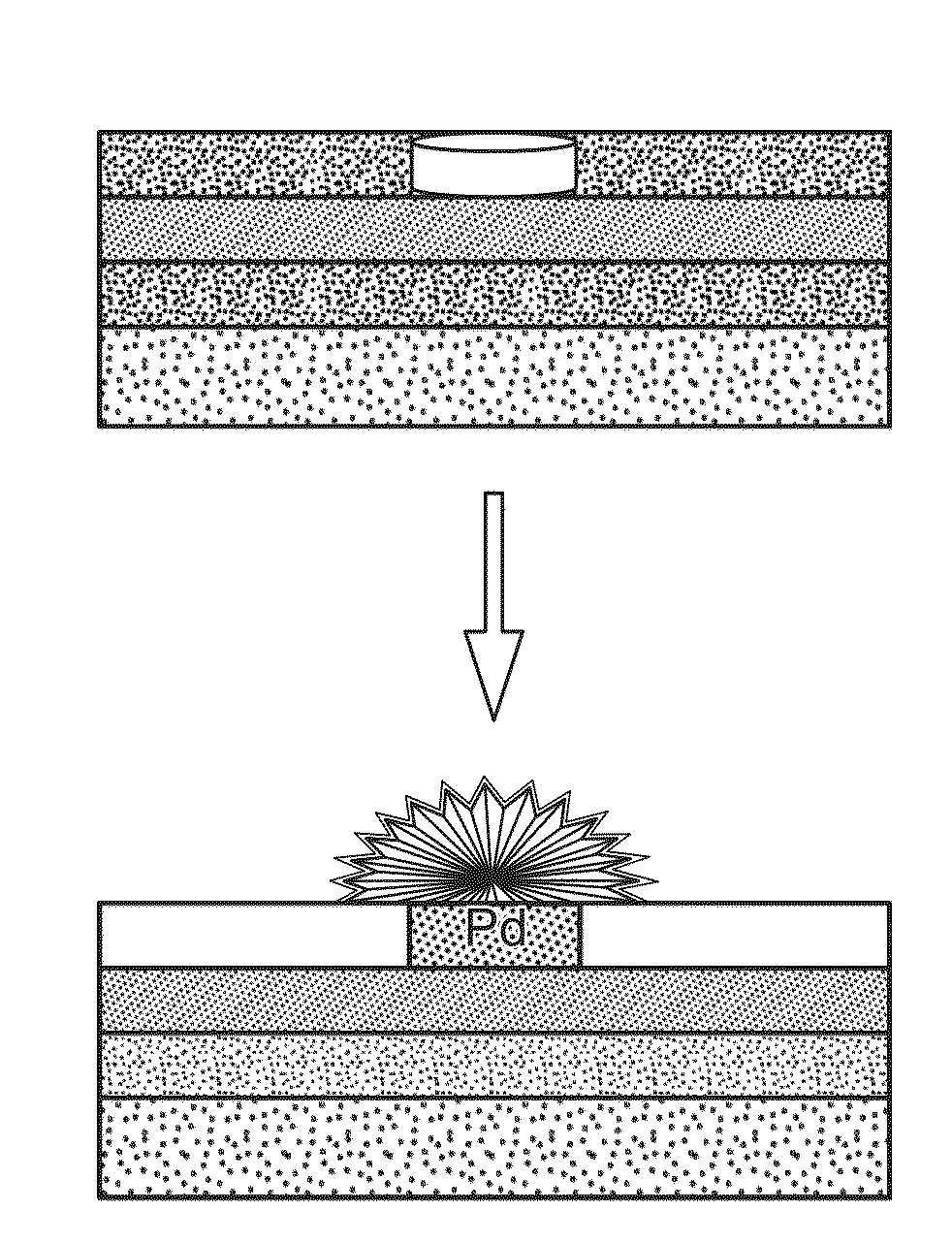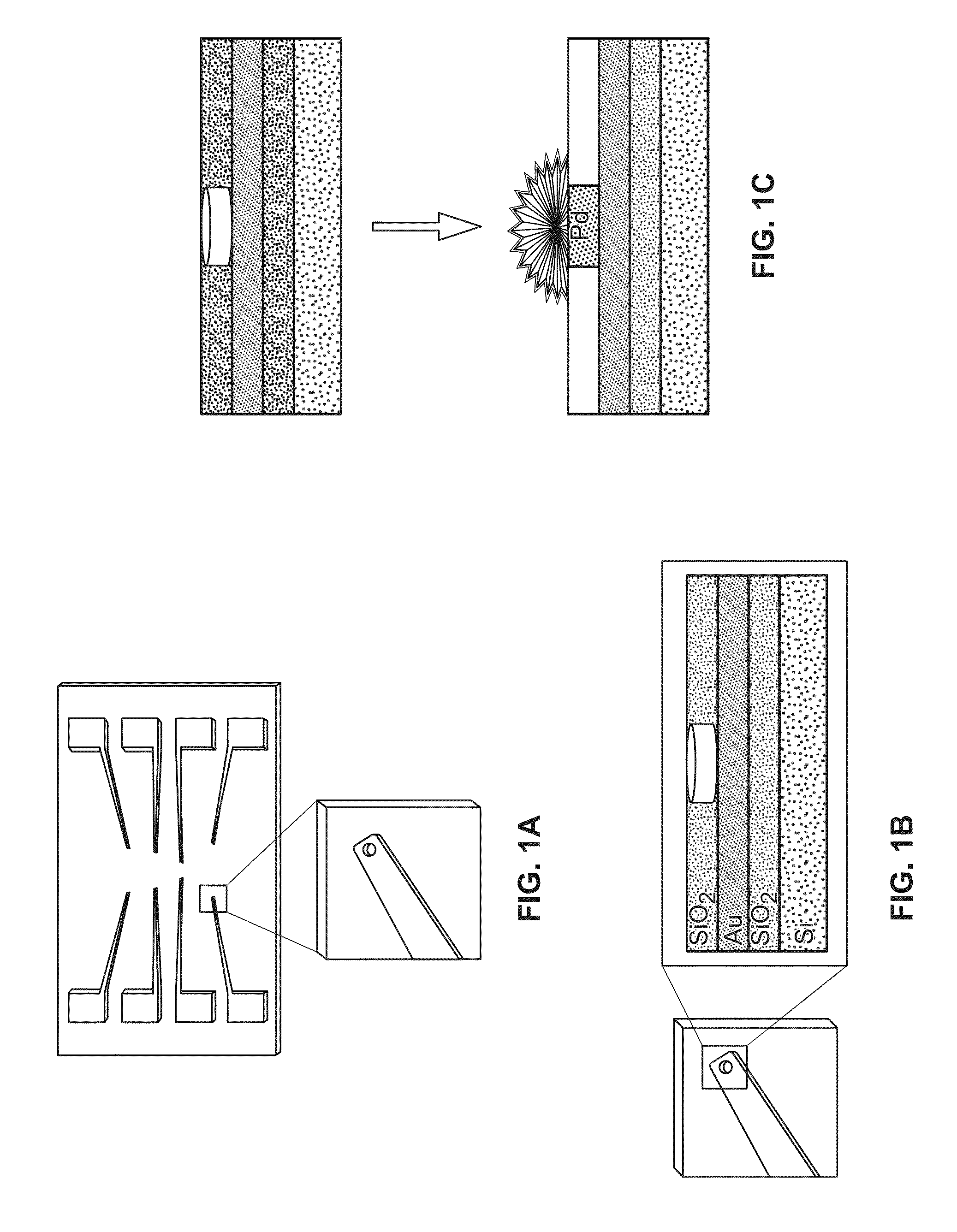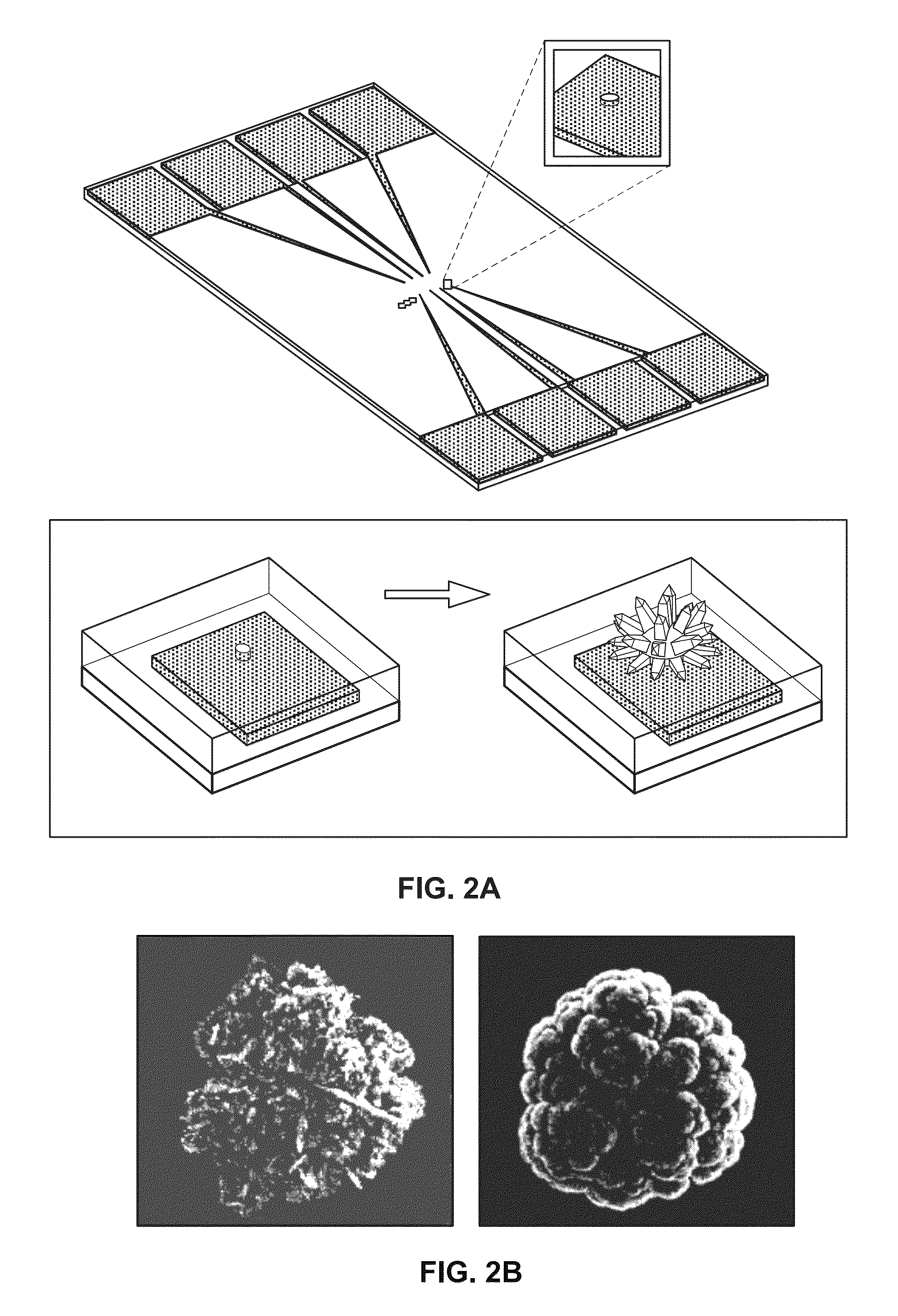Nanostructured microelectrodes and biosensing devices incorporating the same
a biosensor and microelectrode technology, applied in the field of nanostructured microelectrodes and biosensors incorporating the same, can solve the problems of limited implementation of such devices, difficult to work with nanoscale electrodes, and low detection limits, and achieve easy integration into existing manufacturing facilities, promote the availability of target molecules, and facilitate work
- Summary
- Abstract
- Description
- Claims
- Application Information
AI Technical Summary
Benefits of technology
Problems solved by technology
Method used
Image
Examples
example 1
Parameters for Manufacturing NMEs
[0078]In this example, Pd was used as an electrode material. To investigate the time-dependence of the electrodeposition, the structures of the Pd NMEs being electrodeposited were monitored as a function of time. Time-dependent electrodeposition experiments were performed at −100 mV using 0.5 M HCl as supporting electrolyte. Pd structures were formed for (a) 25, (b) 50, (c) 125, (d) 250, and (e) 500 s. After 50 s, structures with average diameters of 1.3 μm and heights of 0.5 μm were observed, and after 500 s the Pd electrodes were typically 8 μm and 5 μm in diameter and height. The smaller structures made with shorter deposition times typically exhibited depressions in the center of the microelectrodes, which may indicate that nucleation occurs preferentially at the boundary of the aperture.
[0079]Another controllable parameter that may influence the final structure of the NME is the deposition potential. Specifically, the size and surface morphology...
example 2
Direct Profiling of Prostate Cancer Biomarkers in Tumor Tissue Using a Multiplexed Nanostructured Microelectrode Integrated Circuit
[0085]Materials and Methods
[0086]Chip Fabrication.
[0087]The chips were fabricated at the Canadian Photonics Fabrication Center. 3″ silicon wafers were passivated using a thick layer of thermally grown silicon dioxide. A 350 nm gold layer was deposited on the chip using electron-beam assisted gold evaporation. The gold film was patterned using standard photolithography and a lift-off process. A 500 nm layer of insulating silicon dioxide was deposited using chemical vapor deposition. 500 nm apertures were imprinted on the electrodes using standard photolithography, and 2 mm×2 mm bond pads were exposed using standard photolithography.
[0088]Fabrication of Nanostructured Microelectrodes.
[0089]Chips were cleaned by rinsing in acetone, IPA, and DI water for 30 s and dried with a flow of nitrogen. All electrodeposition was performed at room temperature with a Bi...
example 3
Direct, Electronic MicroRNA Detection Reveals Differential Expression Profiles in 30 Minutes
[0115]Materials and Methods
[0116]Materials.
[0117]6-mercapto-1-hexanol (97% MCH), hexaamine ruthenium chloride (99.9+%), potassium ferricyanide (99%), and palladium(II)chloride(99.9+%) were purchased from Sigma-Aldrich Canada Ltd (Oakville, ON). perchloric acid (70%), acetone (ACS grade) and isopropyl alcohol (IPA, ACS grade) were obtained from EMD (Gibbstown, N.J.). Thiolated PNA oligomers were obtained from Biosynthesis Inc (Lewisville, Tex.) with HPLC purified grade. PNA probes a Cys-Gly dipeptide at their N-terminus. Gly acts as a spacer, while Cys provides free thiol for immobilization on the electrode surface. Synthetic microRNAs (5′ end phosphorylated and HPLC purified) were obtained from Eurofins MWG Operon (Huntsville, Ala.). All PNA and RNA sequences are shown in table S1 provided in the supporting information.
[0118]Chip Fabrication.
[0119]The chips were fabricated at the Canadian Pho...
PUM
| Property | Measurement | Unit |
|---|---|---|
| time duration | aaaaa | aaaaa |
| height | aaaaa | aaaaa |
| height | aaaaa | aaaaa |
Abstract
Description
Claims
Application Information
 Login to View More
Login to View More - R&D
- Intellectual Property
- Life Sciences
- Materials
- Tech Scout
- Unparalleled Data Quality
- Higher Quality Content
- 60% Fewer Hallucinations
Browse by: Latest US Patents, China's latest patents, Technical Efficacy Thesaurus, Application Domain, Technology Topic, Popular Technical Reports.
© 2025 PatSnap. All rights reserved.Legal|Privacy policy|Modern Slavery Act Transparency Statement|Sitemap|About US| Contact US: help@patsnap.com



